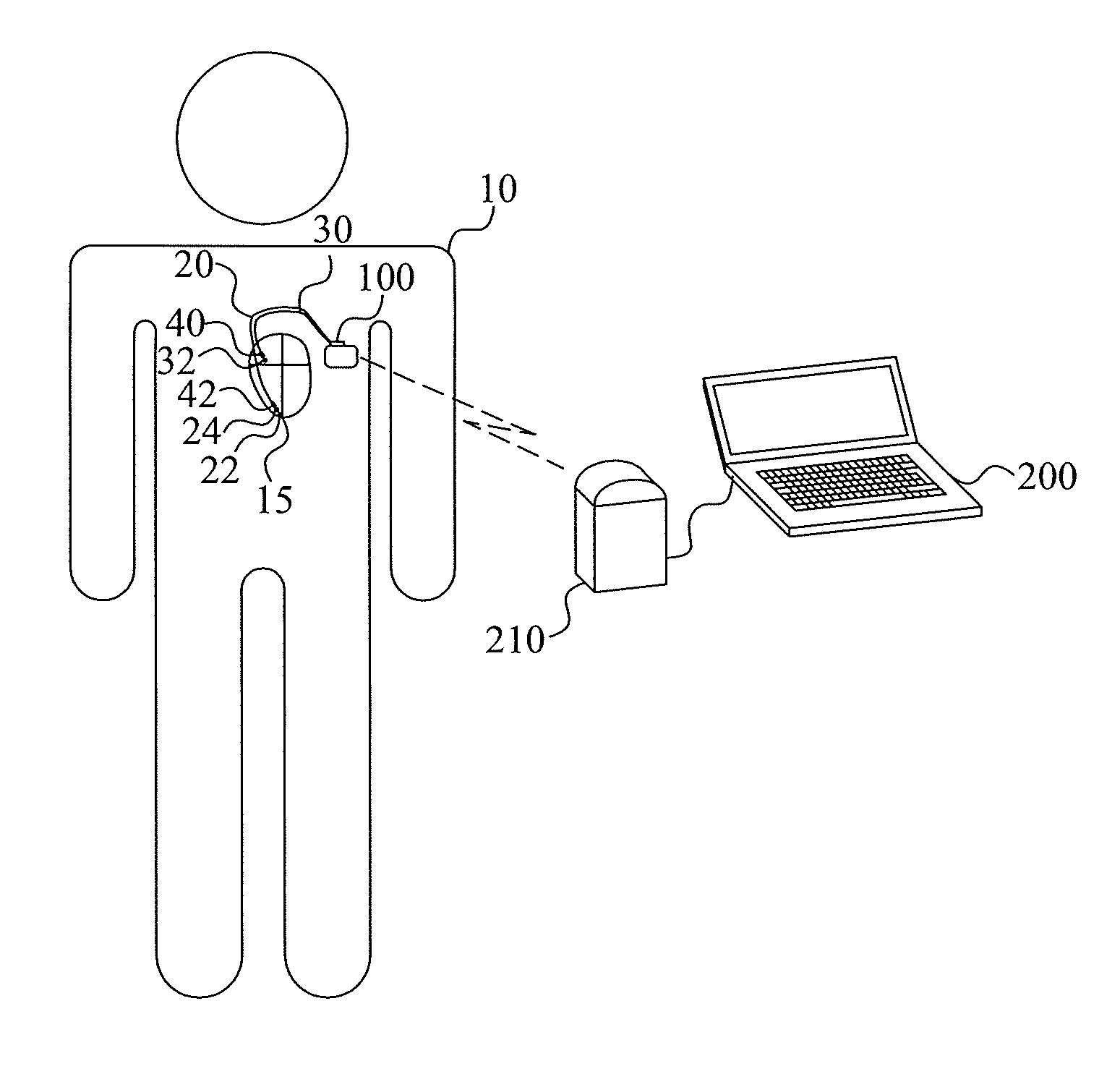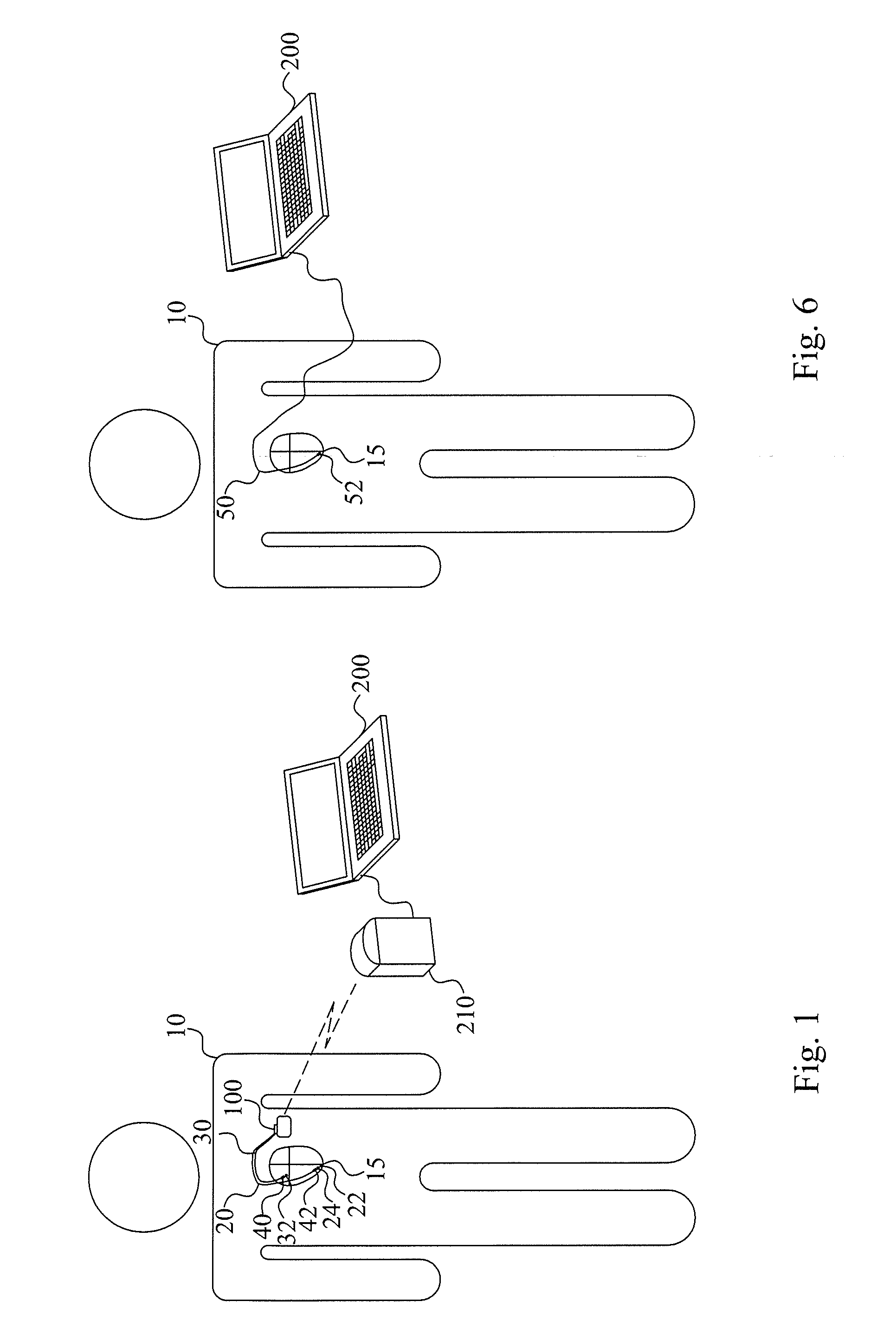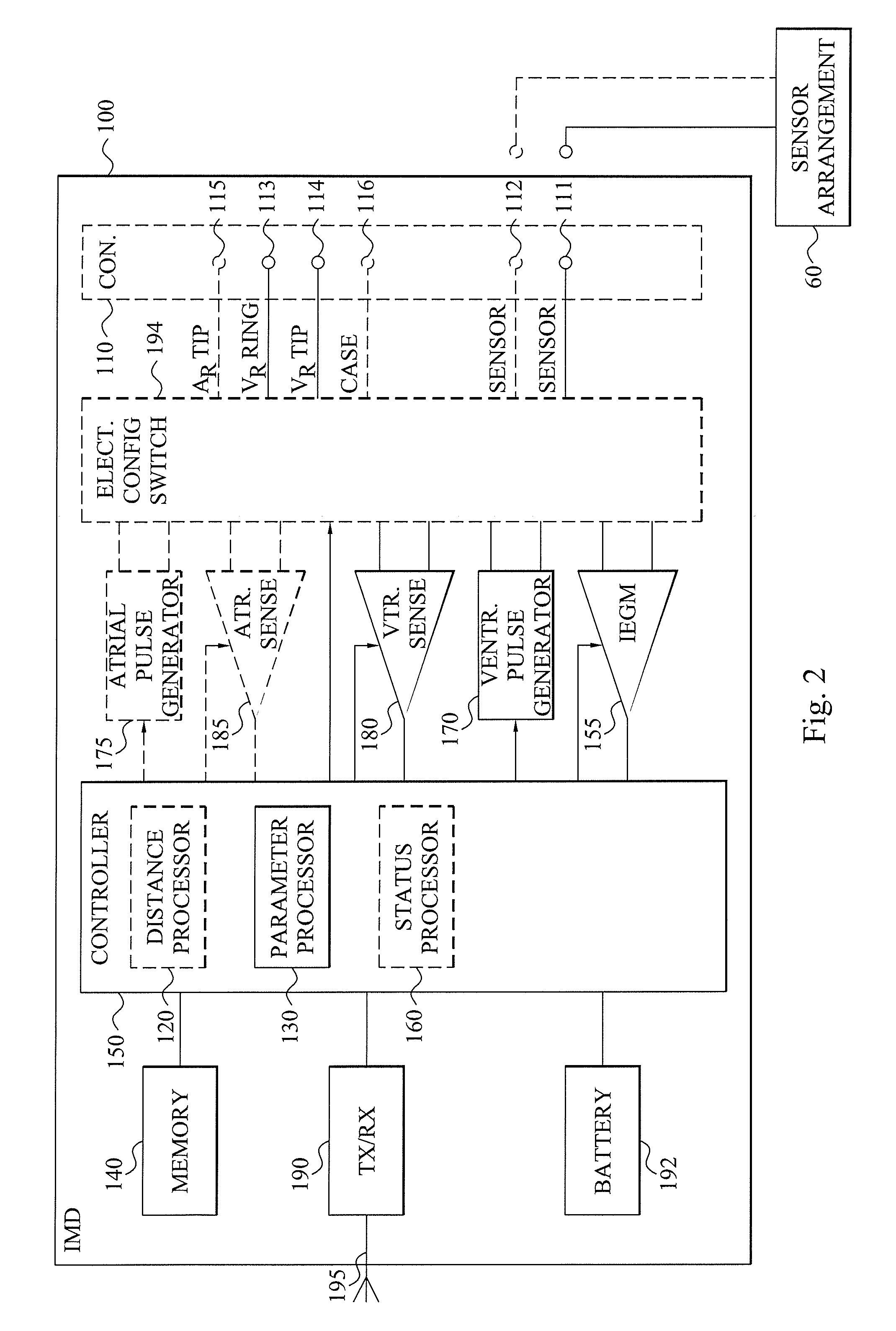Contraction status assessment
a technology of contraction status and status assessment, applied in the field of cardiac monitoring, can solve problems such as reducing systolic function, inducing heart failure, and implantation of crt devices in the near futur
- Summary
- Abstract
- Description
- Claims
- Application Information
AI Technical Summary
Benefits of technology
Problems solved by technology
Method used
Image
Examples
Embodiment Construction
[0023]Throughout the drawings, the same reference numbers are used for similar or corresponding elements.
[0024]The present embodiments generally relate to cardiac monitoring and in particular to the assessment of contraction status of a subject's heart. This contraction status assessment is performed by monitoring the inter-movement of different parts of a ventricle of a subject's heart during at least a portion of a cardiac cycle. Thus, how these different parts move relative each other can be used to assess the contraction status of the subject's heart.
[0025]Different models exist to describe how the heart moves during a cardiac cycle. One of these models, denoted the Torrent-Guasp modes, states that a healthy cardiac contraction starts with an initial torsion motion. This motion originates from the base of the heart, also identified as the basal region of a ventricle or the valve plane, and propagates in a helical manner down and around the heart towards the apex. This torsion mo...
PUM
 Login to View More
Login to View More Abstract
Description
Claims
Application Information
 Login to View More
Login to View More - R&D
- Intellectual Property
- Life Sciences
- Materials
- Tech Scout
- Unparalleled Data Quality
- Higher Quality Content
- 60% Fewer Hallucinations
Browse by: Latest US Patents, China's latest patents, Technical Efficacy Thesaurus, Application Domain, Technology Topic, Popular Technical Reports.
© 2025 PatSnap. All rights reserved.Legal|Privacy policy|Modern Slavery Act Transparency Statement|Sitemap|About US| Contact US: help@patsnap.com



